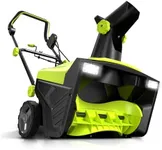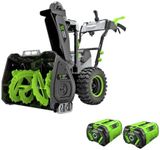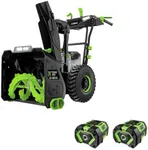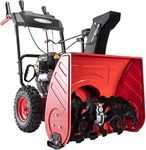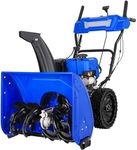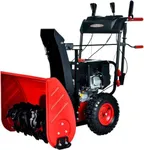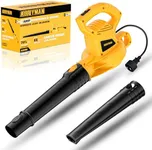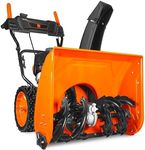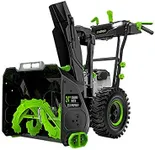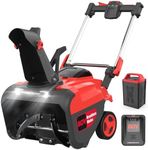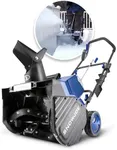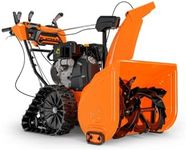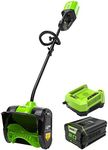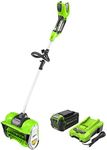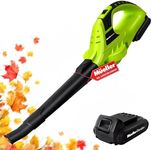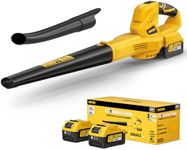We Use CookiesWe use cookies to enhance the security, performance,
functionality and for analytical and promotional activities. By continuing to browse this site you
are agreeing to our privacy policy
10 Best Inexpensive Snow Blowers 2025 in the United States
How do we rank products for you?
Our technology thoroughly searches through the online shopping world, reviewing hundreds of sites. We then process and analyze this information, updating in real-time to bring you the latest top-rated products. This way, you always get the best and most current options available.

Buying Guide for the Best Inexpensive Snow Blowers
Choosing the right snow blower can make a big difference in how easily and efficiently you can clear snow from your driveway, sidewalks, and other areas. When looking for an inexpensive snow blower, it's important to consider several key specifications to ensure you get a model that meets your needs without breaking the bank. Here are some important specs to consider and how to navigate them.TypeSnow blowers come in different types, mainly single-stage, two-stage, and three-stage. Single-stage snow blowers are lightweight and best for light to moderate snowfall on small to medium-sized driveways and walkways. Two-stage snow blowers are more powerful and can handle heavier snowfall and larger areas. Three-stage snow blowers are the most powerful and can tackle the heaviest snow and ice. For an inexpensive option, a single-stage snow blower is usually sufficient unless you live in an area with very heavy snowfall.
Clearing WidthThe clearing width of a snow blower refers to how wide a path it can clear in one pass. This is important because a wider clearing width means fewer passes to clear an area, saving you time and effort. Clearing widths typically range from about 18 inches to 30 inches. For smaller areas or lighter snowfall, a clearing width of 18-22 inches is usually adequate. For larger areas or heavier snowfall, you might want to consider a width of 24 inches or more.
Intake HeightThe intake height is the maximum depth of snow that the snow blower can handle in one pass. This is important for ensuring that the snow blower can handle the typical snowfall in your area. Intake heights usually range from about 12 inches to 23 inches. If you live in an area with light to moderate snowfall, an intake height of 12-18 inches should be sufficient. For areas with heavy snowfall, look for an intake height of 20 inches or more.
Power SourceSnow blowers can be powered by gas, electricity, or batteries. Gas-powered snow blowers are typically more powerful and can handle larger areas and heavier snowfall, but they require more maintenance and can be noisier. Electric snow blowers are quieter and require less maintenance, but they are usually less powerful and need to be plugged in, which can limit mobility. Battery-powered snow blowers offer more mobility than electric models but may have limited run time. For an inexpensive option, electric snow blowers are often a good choice for small to medium areas with light to moderate snowfall.
Throw DistanceThe throw distance is how far the snow blower can throw the snow. This is important for ensuring that the snow is moved far enough away from the cleared area. Throw distances can range from about 10 feet to 50 feet. For small areas, a throw distance of 10-20 feet is usually sufficient. For larger areas, look for a throw distance of 20-30 feet or more.
WeightThe weight of the snow blower can affect how easy it is to maneuver and store. Lighter snow blowers are easier to handle and store but may be less powerful. Heavier snow blowers can handle more snow but may be more difficult to maneuver. For an inexpensive option, look for a balance between weight and power that suits your physical capabilities and storage space.
Most Popular Categories Right Now
